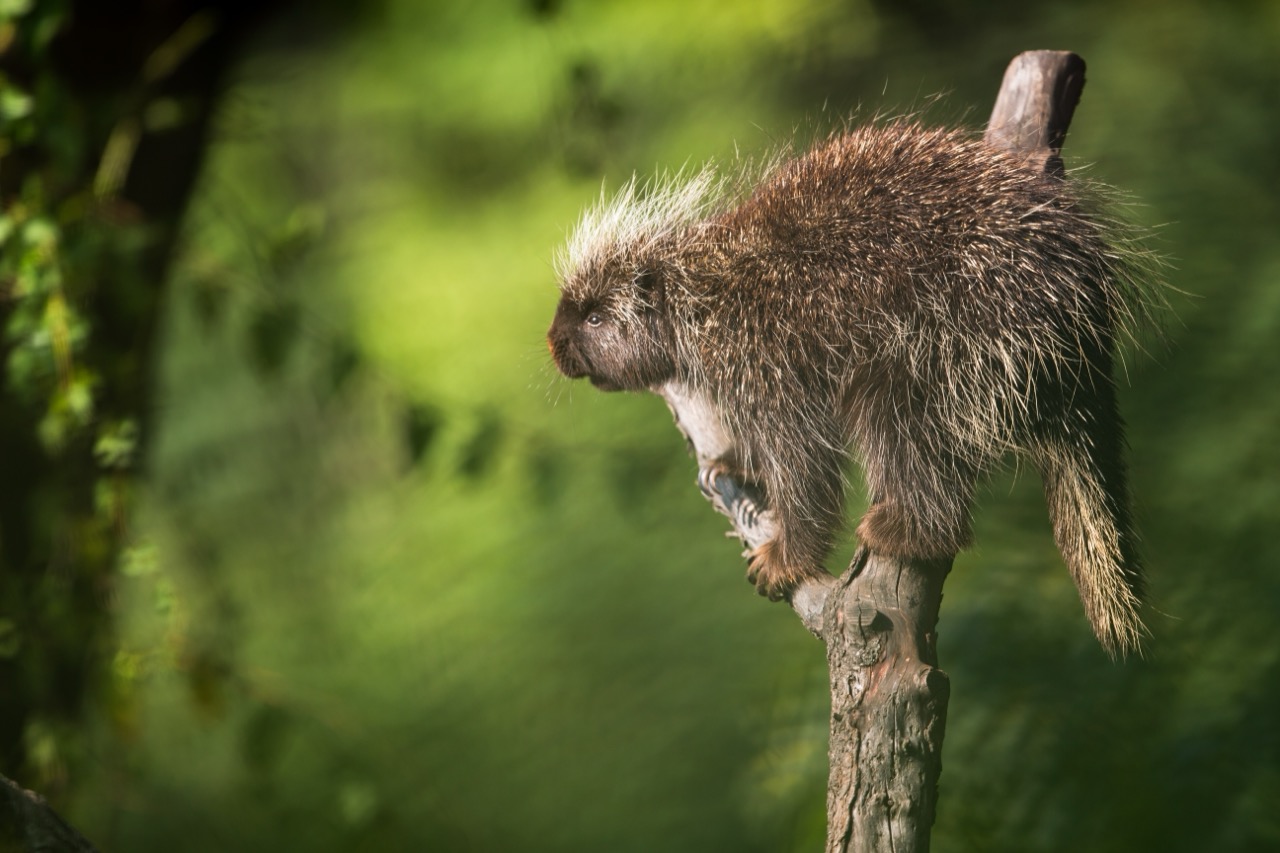Porcupines, with their quill-covered bodies and waddling gait, might not be the cuddliest animals in the forest, but they are certainly among the most fascinating. As nocturnal creatures, they play crucial roles in their ecosystems, not just as herbivores but also in influencing the behavior of predators and the spread of plant seeds. This article delves into the secretive world of porcupines, exploring everything from their unique physical characteristics to their interactions with humans.
Characteristics / Physical Description
Porcupines are distinguished by their most famous feature: a coat of sharp quills. These quills are modified hairs coated with thick plates of keratin that are designed to detach easily when a predator makes contact. Typically, porcupines are bulky animals with small heads and chunky bodies. Their coloration usually ranges from brown to grey, providing camouflage in their natural habitats. Eyes and ears are small, reflecting their reliance on smell and touch rather than sight or hearing.
Taxonomy and Classification
Porcupines belong to the family Erethizontidae in the New World and Hystricidae in the Old World. These families are part of the Rodentia order, which indicates their close relationship to other rodents. The sharp distinction between New World and Old World porcupines highlights an interesting case of convergent evolution, where similar traits evolve independently in different evolutionary branches due to similar environmental pressures.
Behavior and Social Structure
Most porcupines are solitary creatures with the exception of mothers with young or when gathering to feed. They are primarily nocturnal, using the cover of night to forage and avoid predators. Despite their formidable defense system, porcupines have a gentle and timid nature, preferring flight over fight whenever possible. Communication among porcupines is subtle and often involves sounds and chemical signals.
Habitat and Distribution
Porcupines occupy a range of habitats across both the Old and New Worlds. In North America, they are commonly found in forests, deserts, and hillside areas. Old World porcupines tend to inhabit Southern Europe, Asia, and Africa, often preferring rocky outcrops and hills. Their adaptability in various environments underscores their evolutionary success.
Diet and Feeding Habits
As herbivores, porcupines feed on a variety of vegetation including leaves, herbs, twigs, and bark. Their diet varies seasonally; in the winter, they may chew on bark and branches, while during the summer, they prefer softer greens. This diet is crucial in aiding the digestion process, as it helps wear down their constantly growing teeth.
Breeding and Reproduction
Porcupines have a low reproductive rate, typically giving birth to one or two offspring per year. The gestation period lasts about seven months, a relatively long period compared to other rodents. Young porcupines are born with soft quills, which harden a few hours after birth, providing immediate protection from predators.
Relationship with Humans
Humans and porcupines have a long history of conflict, mainly due to the damage porcupines can cause to wooden tools and structures. However, porcupines also play significant roles in their ecosystems as agents of seed dispersal and as a food source for various predators, highlighting the importance of their conservation.
Evolutionary History
The evolutionary lineage of porcupines tracks back to rodents that likely evolved quills as a defense mechanism against predators. This adaptation has been remarkably successful, giving rise to the various species of porcupines found today.
Use as Research Animals
Porcupines are occasionally used in research, particularly in studies related to pain and skin disorders due to their unique skin and quill structure. Understanding how quills penetrate and detach could lead to advancements in medical technology, such as new types of hypodermic needles.
Porcupines, with their unique adaptations and ecological roles, are more than just spiky forest dwellers. They are integral components of their habitats, contributing to the ecological diversity and balance of their environments.

